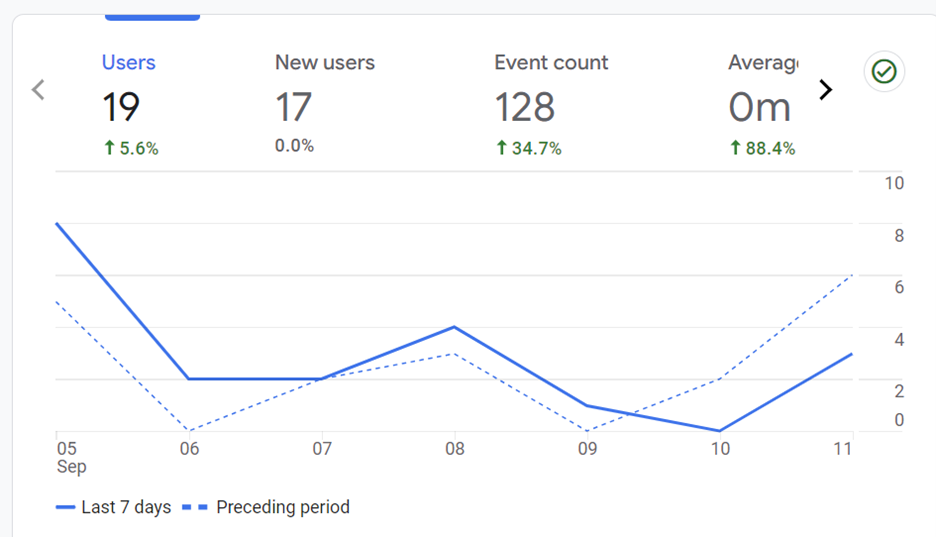In an ever-evolving business landscape, the significance of establishing an online presence for brick-and-mortar stores has become increasingly apparent. As consumer behavior shifts towards digital platforms, the potential benefits and opportunities of expanding into the online realm are undeniable. This blog aims to guide brick-and-mortar businesses through the transformative journey of taking their operations online. We’ll explore the myriad advantages that await, from reaching a broader audience to enhancing customer convenience. Throughout this discussion, we will delve into key steps and strategies, equipping you with the insights needed to successfully transition your brick-and-mortar store into the digital sphere. Whether you’re a small boutique or a longstanding local establishment, this guide will provide you with the tools and knowledge necessary to harness the power of e-commerce and thrive in the modern marketplace.
Choosing a Domain Name
When embarking on a new online venture, it’s crucial to start with a solid foundation, and that begins with choosing the right domain name. Checking domains available and exploring variations can be a creative and strategic process. It involves searching for domain names that align with your brand, convey your message, and are easy for your target audience to remember. Furthermore, considering variations, such as different extensions (.com, .net, .io) or slight modifications to the name, can provide flexibility and options. This meticulous approach ensures that you secure a web address that not only represents your business effectively but also stands out in the crowded digital landscape. For example, if your business name is Marketing Solutions, you will want to search to ensure your domain name matches your business name.

Assessing Your Business Readiness
Embarking on the journey to take your brick-and-mortar store online begins with a comprehensive assessment of your business’s readiness for this digital transformation. This entails a thorough evaluation of your current market position and existing customer base. By understanding your niche and customer demographics, you can tailor your online strategy to effectively cater to their needs and preferences. Equally important is the identification of products or services within your inventory that are well-suited for online sales. This careful selection ensures a seamless transition to the virtual marketplace and maximizes the value you offer to your audience. Additionally, a critical analysis of your competition in the online arena provides invaluable insights into market trends, pricing strategies, and potential gaps you can leverage to differentiate your online presence. By conducting a holistic assessment, you lay the foundation for a strategic and informed approach to digitizing your brick-and-mortar business.
Choosing the Right E-Commerce Platform
Selecting the appropriate e-commerce platform is a pivotal decision when transitioning your brick-and-mortar store to the online realm. With a plethora of options available, including well-established platforms like Shopify and WooCommerce, a careful comparison becomes essential. Evaluating factors such as ease of use, customization capabilities, scalability, and available features can guide you in choosing a platform that aligns with your business’s unique needs. It’s crucial to consider your technical proficiency, budget constraints, and future growth aspirations during this selection process. Understanding the setup process and costs associated with the chosen platform is equally vital. This includes factors like domain registration, hosting fees, transaction costs, and any additional expenses that may arise as your online store takes shape. By making an informed choice in e-commerce platforms, you pave the way for a smooth and efficient transition, ensuring your online presence operates seamlessly and delivers a seamless shopping experience to your customers.
Building Your Online Store
Building your online store requires a meticulous blend of design, functionality, and user experience to capture the essence of your brick-and-mortar business in the digital realm. Design and branding considerations are paramount, as they shape the visual identity that customers will associate with your online store. From color schemes to layout, every element should mirror your brand’s personality and create a cohesive and inviting atmosphere. Equally crucial is the creation of product listings that entice customers to explore and purchase. Craft compelling descriptions that not only elucidate product details but also resonate with the emotions and aspirations of your target audience. Accompany these descriptions with high-quality images that offer a clear and comprehensive view of your products, enabling customers to make informed choices.
As your online store takes shape, integrating secure payment gateways and shipping options ensures a seamless and trustworthy shopping experience. Implementing reliable and well-known payment methods instills confidence in your customers, reducing cart abandonment rates. Additionally, a variety of shipping options cater to different preferences and timelines, enhancing customer satisfaction. Your online store’s functionality extends beyond aesthetics – it hinges on providing a safe, intuitive, and efficient platform for customers to browse, select, and purchase products. By meticulously addressing these elements, you can establish an online store that mirrors the essence of your brick-and-mortar business while offering the convenience and accessibility that digital shoppers seek.
Marketing Your Online Store
As your online store takes shape, integrating secure payment gateways and shipping options ensures a seamless and trustworthy shopping experience. Implementing reliable and well-known payment methods instills confidence in your customers, reducing cart abandonment rates. Additionally, a variety of shipping options cater to different preferences and timelines, enhancing customer satisfaction. Your online store’s functionality extends beyond aesthetics – it hinges on providing a safe, intuitive, and efficient platform for customers to browse, select, and purchase products. By meticulously addressing these elements, you can establish an online store that mirrors the essence of your brick-and-mortar business while offering the convenience and accessibility that digital shoppers seek.
SEM Marketing
Marketing yourself online, especially during the critical first 3-6 months of establishing your digital presence, requires a strategic approach that emphasizes Search Engine Marketing (SEM). In this initial phase, when organic visibility may be limited, SEM strategies play a pivotal role in getting your brand noticed. By leveraging paid advertising, keyword targeting, and optimizing your ad campaigns, you can quickly drive traffic to your website and generate valuable leads. This not only jumpstarts your online presence but also provides valuable data insights to inform your long-term organic growth strategy.
Handling Logistics and Customer Service
Effective handling of logistics and customer service forms the backbone of a successful online store. Firstly, establishing streamlined order fulfillment and shipping processes ensures timely delivery and customer satisfaction. By partnering with reliable shipping carriers and optimizing packaging, you create a seamless experience that leaves a positive impression on buyers. Secondly, managing inventory and stock levels effectively is paramount. Employ inventory management systems to monitor stock in real-time, preventing stockouts or overstocking that can disrupt customer experience and strain resources. Finally, providing exceptional customer service and support is non-negotiable. Promptly addressing inquiries, concerns, and returns, coupled with attentive communication, builds trust and loyalty among your customer base. Mastering these logistical and service aspects ensures that your online store not only attracts customers but also delivers a seamless and satisfying shopping experience that encourages repeat business and positive reviews.
Data Security and Privacy
In an era driven by digital interactions, prioritizing data security and privacy is paramount for any online store. Robust security measures must be implemented to safeguard sensitive customer data from potential breaches and cyber threats. By employing encryption, secure payment gateways, and regular security audits, you ensure a fortified defense against unauthorized access. Equally crucial is adherence to data protection and privacy regulations. Staying compliant with legal frameworks not only mitigates legal risks but also demonstrates your commitment to safeguarding customer information. To further foster trust, transparent privacy policies should be established, detailing how customer data is collected, used, and protected. By weaving these layers of protection into the fabric of your online store, you not only fortify customer trust but also uphold the integrity of your brand in the digital landscape.
Measuring Success
The journey of taking your brick-and-mortar store online is a dynamic process that necessitates continuous assessment and adaptation. Setting key performance indicators (KPIs) forms the bedrock of tracking your online store’s progress. By defining measurable goals such as website traffic, conversion rates, and customer engagement, you create a tangible framework for gauging success. Consistent analysis of website analytics and sales data unveils valuable insights into customer behaviors and preferences, enabling you to pinpoint areas for enhancement. Equally important is remaining receptive to customer feedback and market trends. Adapting strategies based on this input not only showcases your commitment to meeting customer expectations but also ensures your online store remains aligned with evolving market dynamics. In this ever-evolving digital landscape, the ability to measure, learn, and adapt is key to not just surviving but thriving in the online realm.

Growing your Online Presence
The journey of taking your brick-and-mortar store online is a dynamic process that necessitates continuous assessment and adaptation. Setting key performance indicators (KPIs) forms the bedrock of tracking your online store’s progress. By defining measurable goals such as website traffic, conversion rates, and customer engagement, you create a tangible framework for gauging success. Consistent analysis of website analytics and sales data unveils valuable insights into customer behaviors and preferences, enabling you to pinpoint areas for enhancement. Equally important is remaining receptive to customer feedback and market trends. Adapting strategies based on this input not only showcases your commitment to meeting customer expectations but also ensures your online store remains aligned with evolving market dynamics. In this ever-evolving digital landscape, the ability to measure, learn, and adapt is key to not just surviving but thriving in the online realm.
Why is Online Retail Important?
Online retail has become increasingly vital for the modern retail landscape. The significance of the online platform in retail cannot be overstated, as it opens up a world of opportunities for both businesses and consumers. Firstly, it offers convenience like never before, allowing shoppers to browse, compare, and purchase products from the comfort of their homes, at any time of day or night. This accessibility transcends geographical boundaries, expanding a retailer’s customer base beyond local limitations. Furthermore, online retail provides valuable data and insights that enable businesses to understand their customers better and tailor their offerings accordingly. With the growth of e-commerce, retailers can also reduce overhead costs associated with physical stores. In today’s fast-paced digital age, embracing the online realm is essential for retailers to stay competitive, connect with a broader audience, and adapt to evolving consumer preferences.
In a world driven by digital evolution, the journey of taking a brick-and-mortar store online is both transformative and promising. As we reflect on the essential steps covered in this guide, from assessing readiness and building a captivating online storefront to mastering marketing strategies and ensuring data security, a comprehensive roadmap has emerged. It is our fervent hope that this guide has provided you with the insights and tools necessary to confidently embark on this digital transformation. Embracing this transition isn’t merely an option; it’s an opportunity to reach new heights of success. As you navigate this new terrain, remember that each challenge is a chance for growth, and every obstacle can become a stepping stone toward greater achievements. With the vast potential for increased reach, customer engagement, and profitability that an online presence brings, the horizon is filled with promise. Seize the moment, forge ahead, and watch your brick-and-mortar store’s legacy seamlessly merge with the boundless opportunities of the digital world.





